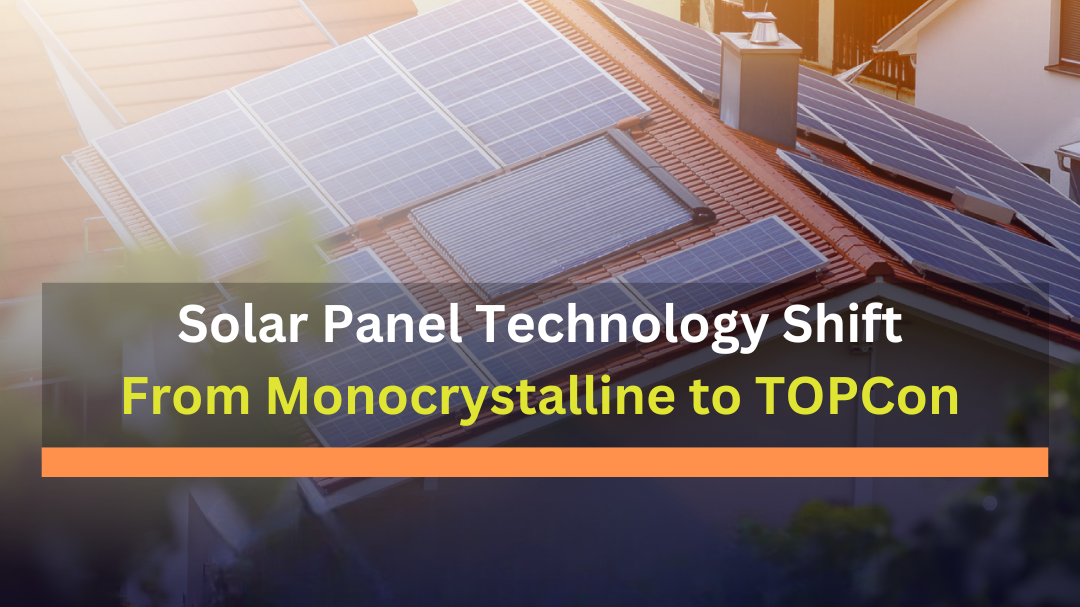Solar Panel Technology Shift: From Monocrystalline to TOPCon
The solar industry is experiencing a rapid technological shift, with innovations continually reshaping the landscape. The pace of change is accelerating from advancements in panel efficiency to improved energy storage solutions and smart grid integration. These developments promise a more sustainable and efficient future for solar energy adoption worldwide.
Advancements in solar panel technology have revolutionized the renewable energy landscape, making solar panels more accessible and efficient than ever before. Innovations such as thin-film solar cells, PERC (Passivated Emitter Rear Cell) technology, and bifacial modules have significantly increased efficiency while reducing production costs. Additionally, improvements in manufacturing processes, such as automated production lines and economies of scale, have further driven down prices. These advancements not only make solar energy more affordable for consumers but also increase its competitiveness with traditional energy sources. As technology continues to evolve, we can expect even greater efficiency gains and cost reductions in the future.
Different Solar Panel Technologies:
Monocrystalline: Each solar PV cell is made of a single silicon crystal in monocrystalline solar panels.
Polycrystalline: In polycrystalline solar panels, each PV cell is made of multiple silicon crystals melded together during manufacturing.
MonoPERC: PERC stands for Passivated Emitter and Rear Cell. The PERC solar cell has a presence of a passivation layer at the back side of the cell, which helps to minimize recombination losses and increase light absorption.
TOPCon: TOPCon stands for “Tunnel Oxide Passivated Contact”. In a TOPCon solar cell, a delicate tunnel oxide layer is strategically placed between two crucial components: a transparent conductive oxide (TCO) layer and a p-doped crystalline silicon layer.
HJT: Heterojunction (HJT) solar panels are a type of photovoltaic panel that consists of three layers of photovoltaic material. These panels incorporate two distinct technologies: crystalline silicon and amorphous.
Which type of solar panel is better?
For residential use, monocrystalline PV modules are often considered the better option with delivering greater efficiency. Monocrystalline panels typically have higher efficiency rates compared to polycrystalline panels, meaning they can generate more electricity from the same amount of sunlight. This efficiency is particularly beneficial for residential rooftops where space may be limited. Additionally, monocrystalline panels tend to perform better in low-light conditions and have a sleeker, more uniform appearance, which can be appealing for homeowners. While monocrystalline panels may come at a slightly higher cost upfront, their higher efficiency and longer lifespan often make them a more cost-effective choice in the long run for residential solar installations.
Advantages and Applications of Mono PERC Solar Panels
Mono PERC (Passivated Emitter Rear Cell) solar panels are a cutting-edge innovation in photovoltaic technology, boasting numerous advantages. Unlike traditional solar cells, PERC technology incorporates a rear surface passivation layer, improving light absorption and energy conversion efficiency. This design enhances overall performance, particularly in low-light conditions, increasing energy output and reliability. Mono PERC panels also exhibit superior durability and longevity due to reduced degradation rates, ensuring prolonged operation and cost-effectiveness. Moreover, their sleek design and black appearance make them aesthetically pleasing and suitable for various installations, from residential rooftops to large-scale solar farms. In summary, mono PERC solar panels offer heightened efficiency, durability, and aesthetic appeal, revolutionizing the solar energy landscape.
| Advantages | Disadvantage | Application |
| Enhanced energy production up to 24% | Higher cost | Commercial uses |
| Improved low light and high heat performance | Shading sensitivity | Large scale solar forms |
| Superior area efficiency | ||
| Lower Balance of System (BOS) cost |
Advantages and Applications of TOPCon Solar Panels
TOPCon (Tunnel Oxide Passivated Contact) solar panels represent a breakthrough in photovoltaic technology. By utilizing a thin layer of tunnel oxide, TOPCon cells achieve higher energy conversion efficiency compared to traditional solar panels. This advanced design reduces energy losses and enhances overall performance, even in challenging environmental conditions. Furthermore, TOPCon panels offer improved temperature stability and lower degradation rates, ensuring reliable energy generation over their lifespan. With their superior efficiency and durability, TOPCon solar panels are a promising solution for sustainable energy production.
| Advantages | Disadvantage | Application |
| Higher Efficency up to 28% | Higher production costs | Agriculture and forming |
| Lower degradation | Complex manufacturing | Utility scale solar farms |
| Low temperature sensitivity | High temperature processing | Electric vehicle charging |
| Enhaned bifaciality | ||
| Lower Balance of System (BOS) cost |
Conclusion
When compared to conventional solar cells, TOPCon solar cells offer noticeably higher efficiency and better performance, changing the landscape of solar energy. TOPCon technology holds great promise for contributing significantly to the shift toward a more sustainable and carbon-neutral energy system by lowering the cost of solar energy. Future research and development efforts should yield even more remarkable breakthroughs in TOPCon technology, rendering solar energy a more attractive and feasible renewable energy source.

